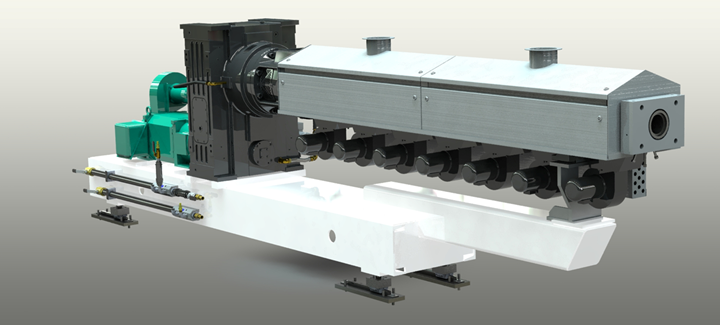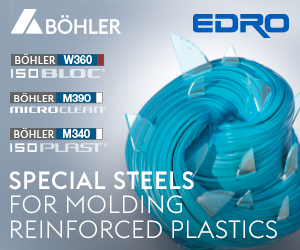Sleek Extruder for Coating Applications
Smaller footprint, lighter weight allows machine to be readily integrated into existing carriages or platforms.
Davis-Standard has introduced a compact extruder engineered for extrusion coating applications. Called the CHP, the machine has a sleek design that provides a smaller footprint. It’s also said to be lighter in weight than comparably sized machines, allowing it to be more easily added to an existing carriage or platform structure. This provides processors with a space-saving replacement or coextrusion addition for increasing outputs and line speed.
The design addresses profitability factors such as reduced raw material loss, improved outputs, and greater application development, Davis-Standard says. It is built for exceptional performance with improved transition times and significantly higher processing rates than conventional extruders.

The CHP is available in sizes ranging from 2 in. to 4 in. (52 mm to 100 mm). Processors benefit from efficient mixing that delivers low pressure and melt temperature variability and output rates up to 80 to100% higher than current extruder options.
In addition, a reduced residence time of 3:1 with a faster purge between resins and colors supports quick changeovers minimizing raw material loss for bottom-line impact. Davis-Standard has a CHP extruder at its laboratory facility in Pawcatuck, Conn., for customers to run trials and validate processing opportunities prior to purchase.
Related Content
-
Formulating LLDPE/LDPE Blends For Abuse–Resistant Blown Film
A new study shows how the type and amount of LDPE in blends with LLDPE affect the processing and strength/toughness properties of blown film. Data are shown for both LDPE-rich and LLDPE-rich blends.
-
The Importance of Viscosity in Melting
The calculations required to determine the right melt temperature for each polymer are complicated. Knowing the power-law coefficient and the consistency index of the polymer you run might prove useful.
-
Troubleshooting Screw and Barrel Wear in Extrusion
Extruder screws and barrels will wear over time. If you are seeing a reduction in specific rate and higher discharge temperatures, wear is the likely culprit.







 (2).jpg;maxWidth=300;quality=90)




